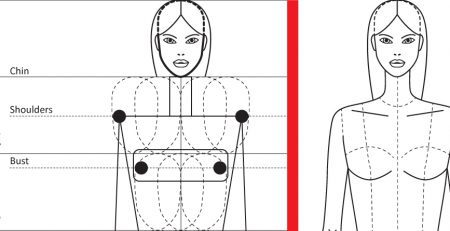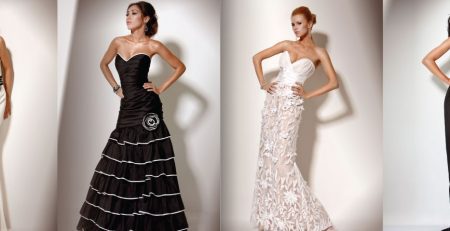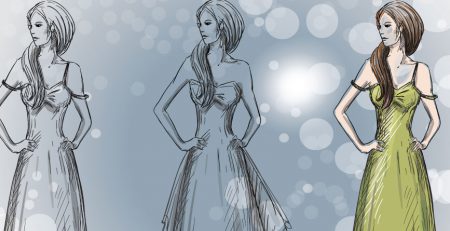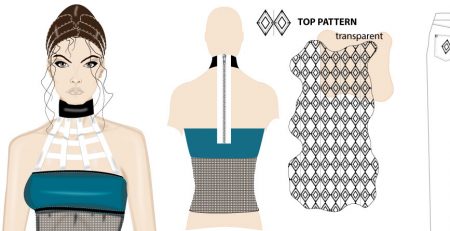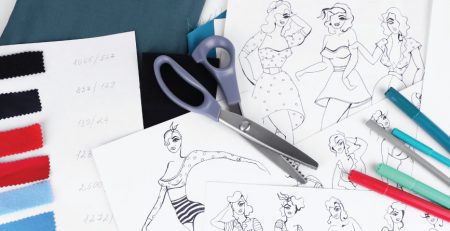Fashion Illustratation – Finding Inspiration
Inspiration for design themes can be found everywhere, whether your source is a seashell on a beach or a splendid skyscraper, the fun of the fair or the Carnival at Rio. If you research well, your topic will automatically influence your garment ideas; for example, the theme of a circus or fairground is likely to produce a colorful, flamboyant look. With an inquiring
mind almost anything can trigger a creative spark. The trick is to be able to select the best route to follow. As a commercial designer you will have your customer in mind from the outset, and self-indulgent flights of fancy may have to take a backseat. As a student, however, the furthest extremes can, and should, be explored. Anything can be watered down; it is much harder to spice up something dull.
A designer should always have afinger on the pulse of the time: music trends, street culture, fllms, fine art movements. It is no coincidence that each fashion season has a discernible look; different designers often produce similar color ranges and silhouettes (the outline shapes of complete ensembles) because they are all aware of the broad trends. (However, designing from a completely off-the-wall angle has also produced some of fashion’s greatest moments.)
Although nothing dates more quickly than fashion, looking to the past for inspiration often produces great results. A whole era can become an inspiration, and the popularity of different eras tends to wax and wane in cycles. One year styles from the 1950s might be in fashion; the next it’s a ’70s look that’s popular. Designs that were the height of fashion become the object of derision, only to reemerge a generation later as “must have” articles; wide-flared, low-rise trousers are a perfect example.
Structured sportswear has inspired many iconic shapes think football shirts and Dynasty shoulder pads. Cycling Lycra produced a whole new fashion concept (skintight garments in bright colors), as did sailing wear, in the form of the synthetic waterproof clothing.
Patterns and styles based on ethnic ideas are recycled again and again by designers. One season they might work with the weaves of Latin American Indians; next year they might feature the prints of certain African tribes.
Fashion often draws on other forms of art for inspiration. The art deco magnificence, glistening reflections, and lofty symmetry of the Chrysler Building in New York make it a superb example of an artistic endeavor that could easily inspire garment design. Hollywood movies can also start fashion trends; The Great Gatsby and the Mad Max series popularized, respectively, 1920s flapper dresses and the “road warrior” look that combines punk and grunge.
Your opportunities for exploring themes are unlimited. You can research ideas by visiting museums or wandering through a city to draw and take photographs yourself, or you can absorb the paintings, sculptures, films, photography, and books created by other people. The Internet is a great source of information that can be accessed from your home or college. The knack of working with inspiration is to avoid trying to absorb too much at once. Being selective with your research and disciplined in developing just a few well-chosen themes will help you produce a focused range of designs that hold together as a collection.


